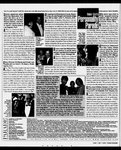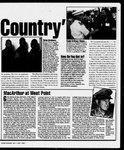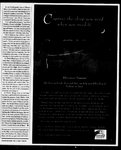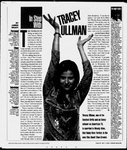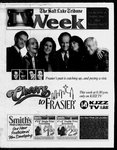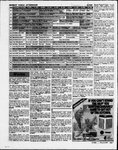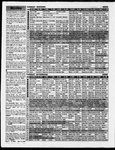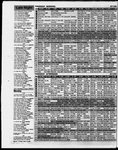| OCR Text |
Show In the last quarter century, West Point has gone through big changes, including major restructuring and adapting to new social realities. How hasthis i the three basic principles at the heart of the academy? BY LARRY SMITH IGHT PLEBES SAT FACING mein a semicircle in a basement room ofthe United States Military Academy at West Point, members ofthe Class of 2002.I turned to a skinnylittle cadet in horn-rimmed glass- will take place on May 27. Whatwill happen to the white peethe newly sscond lieutenants traditionally throw es. “Let me ask you something,”I said. “Why did you come to West Point?” “Sir!” he cried crisply. “To serve my country, sir!” Perhaps like someotheradults my age, T have at times doubted the timbre and mettle of the younger generation. Over the past year and a half, I made three trips to WestPointto gather information for this report as the academy,the world’s preeminent military school, approaches its 200th anniversary in 2002. Thelives of West Point’s graduatesare writ large in the pages of American history, and I wantedto find out how the cadetsof today—withall the changes Americahas gonethroughin thelast two centuries— matchupwith their predecessors. Nearly a sixth ofthe cadets at the academyare now women,andits graduates friends or visitors —waits on the back of the floor of Michie Stadium, scooping them - of the new officer byy The first documented hat toss was in 1946. comefrom every race and class in the AF Serves evolution of United atateaas eeearent COVER PHOTOGRAPHBY EDDIE ADAMS nation. Some,like Peter Chacon VIL, are the first generationto attend the academy. Others, like Mary St. Onge, come from alongline of West Point officers. Mary happenstobe the daughter of Maj. Gen. years. Robert St. Robert St. OngeJr. (Class of ’69), whois aes cone9 directorofplanning and strategy for the General MacArthur Armyat the Pentagon, and the grand- Mobee. oP daughter of Robert St. Onge,the most St. Onge Jr Class of director ot 69,is placing aa strategy for the Valuable player on the 1944 National i i Army football team that pipernane starred Glenn Davis and Doc Blanchard. biol oetheSige But Mary St. Onge, 20, who is now a granddaughter, Mary, is one of 161 women who will graduate with “yearling” or sophomore, didn’t come to West Point because her father urged : her to; she came, she said, because she wanted to be part ofthe history, the tradition anddiscipline that is West Point. To walk through the United States Military Academyat WestPoint, situated on thelip of the Hudson River 50 miles upstream from New York City,is to touch that history: The Piussian Baron von Steuben drilled Gen. George Washington's Continental soldiers on the parade grounds. Stand there now,as the cadet brigade wheels and marches, and you can feel the presenceofthe Continentals to this day. Recognizing that control of the Hudson River was key to the Revolution, Washington engaged Thaddeus Kosciuszko,a Polish engineer,to establish the redoubts andfieldsoffire that turned West Point into a defensible military post. Twentyfour years later, in the spring of 1802, President Thomas Jefferson established PAGE 6 : MAY 7, 2000 : PARADE MAGAZINE |

























































































































































































